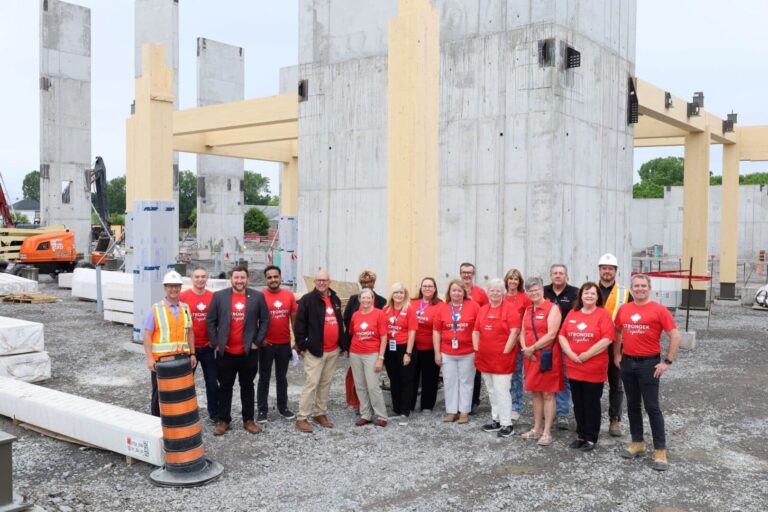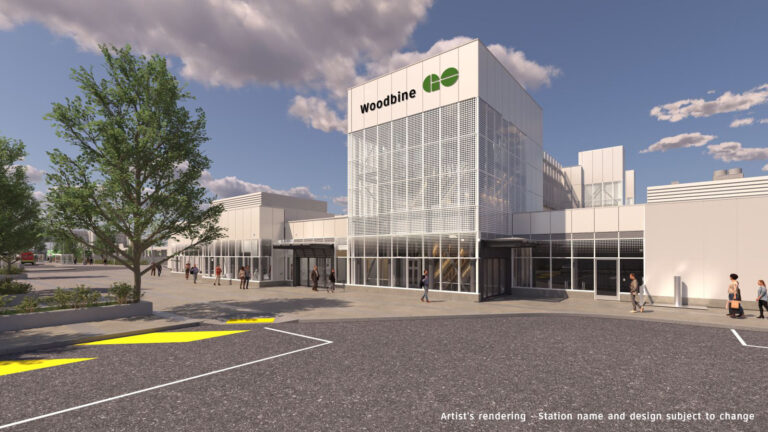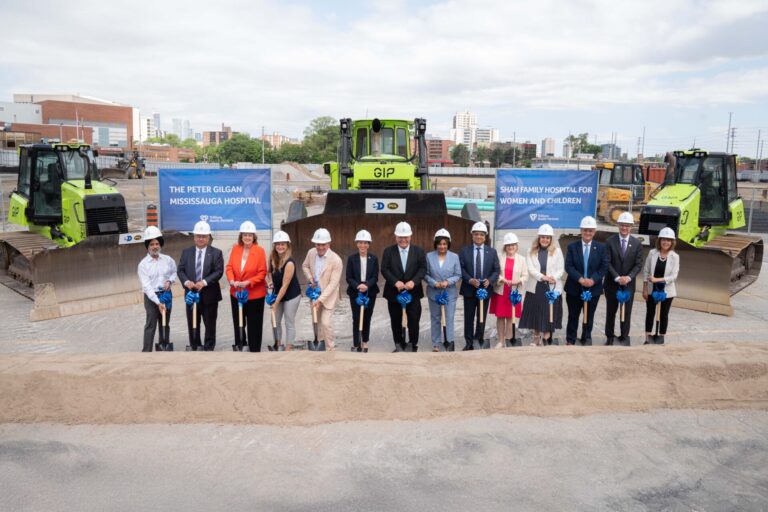Three orders of government, through Waterfront Toronto, announced a major milestone in protecting Toronto residents and businesses from the damages from severe flooding by completing a new mouth for the Don River and a new island.
Governments committed a combined investment of approximately $1.4-billion for a transformational waterfront revitalization project that protects existing Toronto neighbourhoods from extreme flooding and contributes to unlocking up to 240 hectares of land to build urgently needed housing and to construct the city’s largest park network in a generation. This historic achievement marks a big step in an eight-year major construction project to bring the vision for a waterfront city within a city to life.
“Today’s achievement demonstrates what can be accomplished when all orders of government work together to address major infrastructure challenges facing cities across the world” said Jack Winberg, board chair of Waterfront Toronto. “Undertaking a transformation of unprecedented scale requires unrelenting energy, focus and imagination sustained over a long period of time, which Waterfront Toronto has done for over 20 years.”
“Waterfront Toronto recognizes the value of doing the job right, and it shows. We set the bar higher for design innovation, sustainability and meaningful public engagement and have always met the challenge,” said Waterfront Toronto president and CEO George Zegarac. “This historic achievement unlocks much needed public land on Toronto’s waterfront. Our collective vision will lead us to complete a waterfront city that will ultimately become a home to over 100,000 people and a destination for 97,000 jobs. It starts on this brand-new island. Next year, we will open the largest park Toronto has opened in a generation.”
The new island totals 39.6 hectares and is one of the last undeveloped areas of land just steps from Toronto’s downtown. This foundation for an inspiring vision of best-in-Canada city building includes:
- 20.2 hectares of new greenspace and parkland
- 19.4 hectares of developable land
- 6.1km of land for trails
- 4. 5km of underground utilities
- 2km of roads and 4 bridges with dedicated space for modes of active transportation
- The only naturalized shoreline in the Inner Harbour
An Indigenous Advisory Circle has chosen “Ookwemin Minising” (pronounced Oh-kway-min Min-nih-sing) as the island’s name meaning “place of the black cherry trees” in Anishinaabemowin/Ojibwemowin. Toronto City Council will consider the name November 13, 2024.
“The opening of the new mouth for the Don River is a major step in protecting residents in Riverside, Leslieville and the surrounding communities from the risk of flooding due to climate change. This advancement paves the way for our government’s ongoing efforts to revitalize and transform Toronto’s Port Lands,” said Julie Dabrusin, Parliamentary Secretary to the Minister of Environment and Climate Change and MP for Toronto-Danforth.
“Today’s north plug removal marks the completion of the new Don River, another milestone in the Port Lands Flood Protection Project. Once complete, these former industrial lands will be transformed into vibrant, mixed-use communities with housing, parks, retail spaces and more, demonstrating the success of our government’s historic capital plan of more than $191 billion to expand and renew critical public infrastructure over the next decade,” said Amarjot Sandhu, Parliamentary Assistant to Ontario’s Minister of Infrastructure.
Featured image: Removal of the north plug, in progress. Looking west towards the new island. (Waterfront Toronto/Vid Ingelevics/Ryan Walker)











